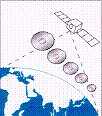 |
INTERNATIONAL SYMPOSIUM ON INFORMATION TECHNOLOGY IN OCEANOGRAPHY (ITO-98) GOA, INDIA 12-16 OCTOBER 1998 |
 |
INTERNATIONAL SYMPOSIUM ON INFORMATION TECHNOLOGY IN OCEANOGRAPHY (ITO-98) GOA, INDIA 12-16 OCTOBER 1998 |
Information Technology - Applications in Geophysics
M.V. Ramana, K.A. Kamesh Raju, T. Ramprasad, A.K.
Chaubey, G.P.S.N. Murty,
V. Subrahmanyam, K. Srinivas, Maria Desa,
K.V.L.N. Sarma, G.C. Bhattacharya
National Institute of Oceanography
Dona Paula, Goa 403004,India
Marine geophysical data in its raw form is not easily comprehensible to users. It is desirable to have processed and interpreted data in the form of geophysical maps and sections. Such information/ databases enable the geophysicists, geologists and planners to decipher the tectonic frame work and in evaluating the resource potential(minerals, hydrocarbons, Gas hydrates etc.) of area. A complete information system/database would form a valuable input for judicious planning and execution of future exploration /research programs.
Recent advances in information technology provide ready access to various geological and geophysical databases maintained by several organisations all over the globe and reduced the time required for collation of vast information in a readily usable format. For example, it is now possible to generate regional tectonic map of the Indian Ocean using the satellite derived gravity and other data from the data base/images available on the internet. Most of the information systems and data bases are constrained by the paucity of interpreted results in the form of maps over the electronic media. Large amounts of geological and geophysical data are available with several organisations in different formats, ranging from published maps, data tables, individually compiled data to data records. Immediate requirement, therefore,is to synthesize the available data and to store it in the form of images/maps using Geographic Information System(GIS).
The National Institute of Oceanography, India has carried out recently the compilation of various geophysical data in connection with the assessment of offshore gas hydrate resources. The data is stored as GIS coverages which has facilitated in establishing the spatial relationships among various parameters and to determine the gas hydrate stability zone thickness of a given area
Present day status of information technology together with GIS provide us an effective tool to develop information systems that would be great help in assessment of non living resource potential. Hence efforts are needed to develop and maintain information systems which are readily updated with new data and results are easily accessible through electronic media to all the user geoscientists.
[ITO - 98] [Welcome] [1998 - Internetional Year of the Oceans] [Objectives of ITO-98] [Plenary Lectures] [Technical Sessions] [Commercial/Corporate Presentation] [Exhibition/Demonstration] [Ocean IT CDROM] [Awards/Financial Assistance] [Fees / Charges] [Souvenir] [Post Symposium Event] [International Scientific Programme Committee] [Organizing Committee] [Schedule] [Scientific Programme Summary] [The Host] [Travelling / Accomodation] [Registration Forms] [Abstracts]
 |
|
 |

Copyright© National Institute Of Oceanography,
Goa,India,1998
updated on 7th July'98